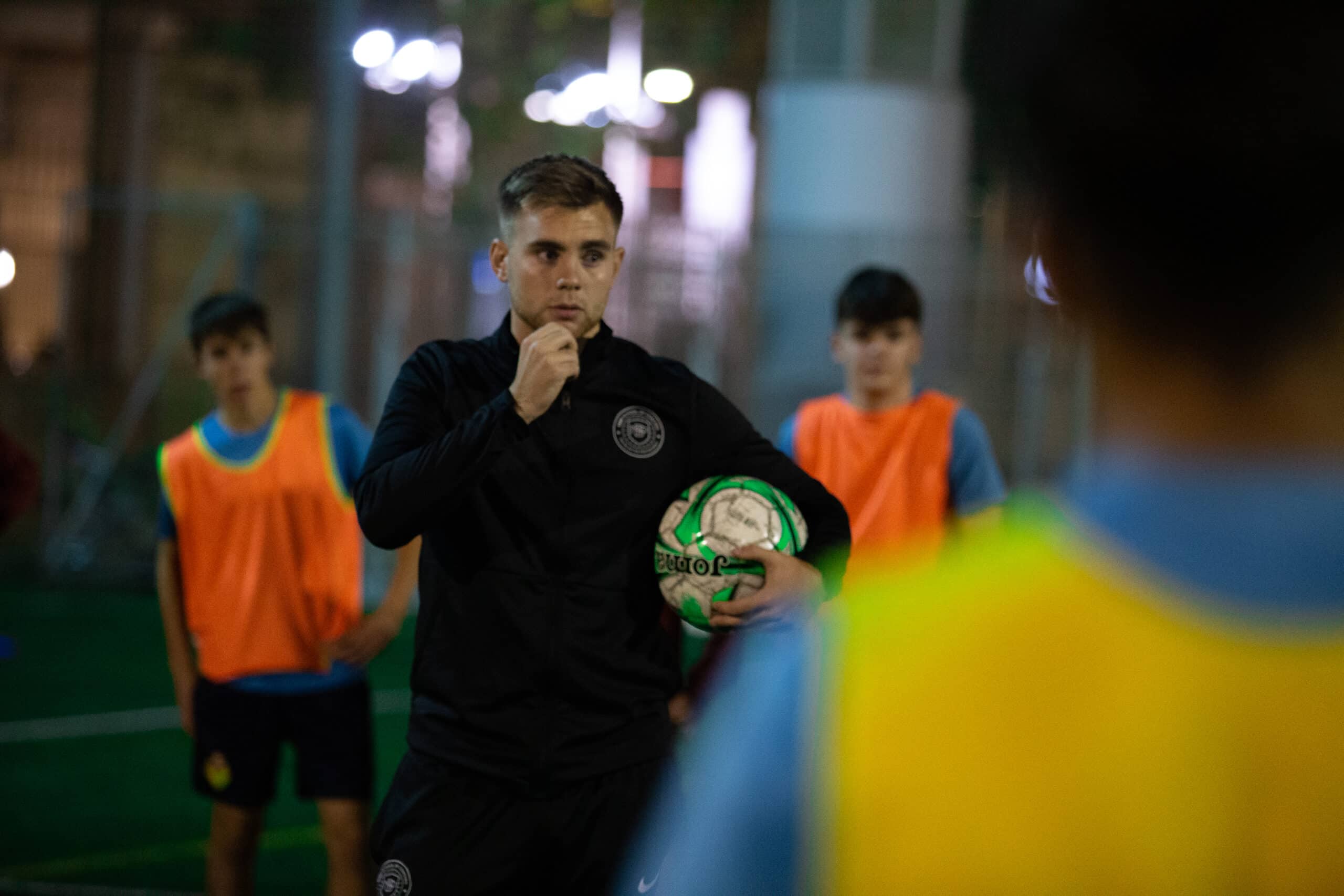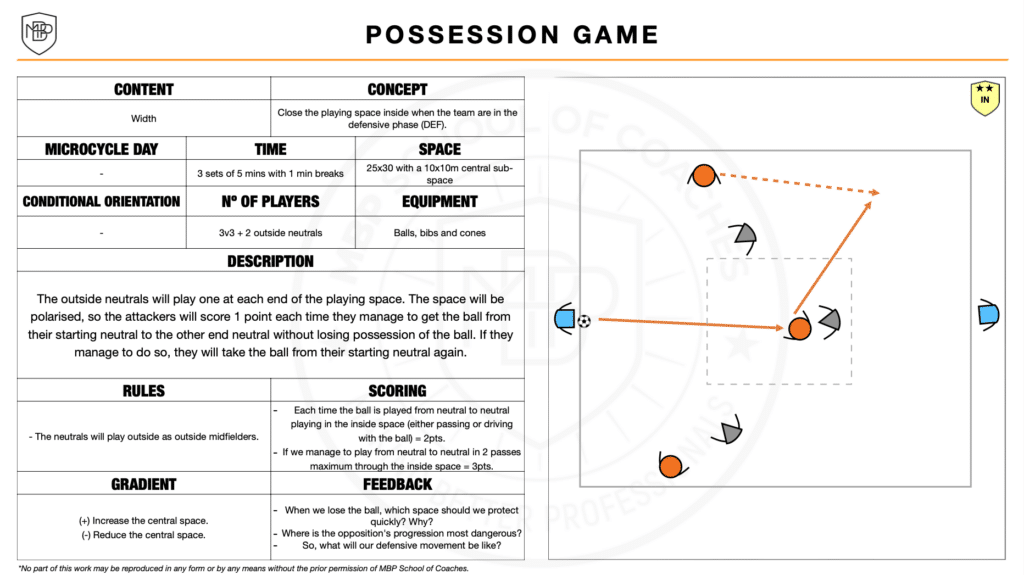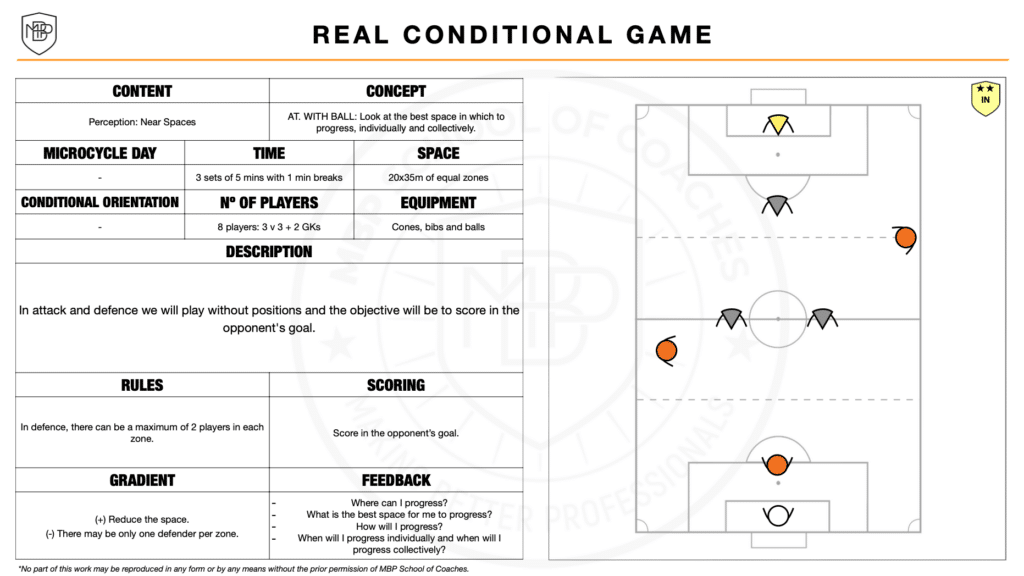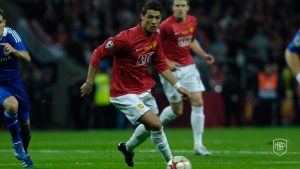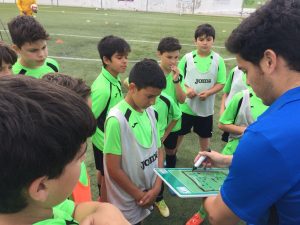The design and implementation of didactic strategies in training sessions are fundamental for the integral development of players. These strategies not only define how the content will be taught, but also influence the level of commitment and participation of the players.
In this article, we will explore five types of didactic strategies to use during the football player’s development period to work on both complementary and basic content blocks.
1.- Circuits:
Circuits, focused on the work of Basic Motor Skills (BMS) and Specific Motor Skills (SMS), are an essential tool for the development of coordination skills. These circuits, which can be performed with or without a ball, are designed with a series of strategically distributed elements to work on specific objectives.
It is essential that the circuits are of short duration and with active participation of the players, thus ensuring a high frequency of repetitions.
2.- General Games:
General games, both with and without the ball, are ideal for training motor skills in a more playful context.
These games, which may include chasing activities or shielding and stealing activities, provide opportunities to work on coordination skills in more dynamic and challenging situations.
3.- Possession Games:
Possession games are a key tool for improving ball retention and circulation. These games are divided into three categories: non-oriented, polarised and positional.
In non-oriented games, the aim is to maintain possession without attacking or defending specific spaces, which encourages the organisation of play based on the location of the ball.
On the other hand, polarised games involve attacking and defending designated areas on the pitch, which adds direction and purpose to the play.
Finally, positional games focus on the specific occupation of spaces and the incorporation of inside neutrals to simulate real game situations.
4.- Discontinuous Invasion Games:
Discontinuous invasion games are a form of training where there is only one goal at one end of the pitch, with a goalkeeper defending it. The objective is to score in that goal, either from the build-up of play for the team that has the ball or by fulfilling a specific task for the team that defends.
These games are characterised by breaks between possession and turnovers of the ball, which determines how long each game situation lasts. It is important for the coach to plan how many times each situation will be repeated in order to know how long the activity will last in total.
There are also variants of these games where players position themselves strategically, which is useful for more advanced players who have a better understanding of how to move around the pitch and what to do from their specific positions.
5.- Real Conditioned Games:
Real Conditioned Games are a form of training that requires having a goal at each end of the pitch that includes goalkeepers.
In these games, the only way to score is by scoring in the opposing team’s goal, although adjustments can be made to the rules to encourage specific behaviours during the play. This is done to maintain the essence of the real game and ensure its specificity.
These games are played continuously, which means that the ball is constantly moving from one team to the other, without stopping for specific periods of time. In addition, there are variants of these games where players are assigned specific positions, which is useful for more advanced stages of game understanding.
Conclusion
The appropriate choice and application of didactic strategies in training football are fundamental to optimise player development. From circuits and general games to possession games and real conditioned games, each strategy offers unique opportunities to work on different aspects of the game and enhance players’ performance on the pitch.

